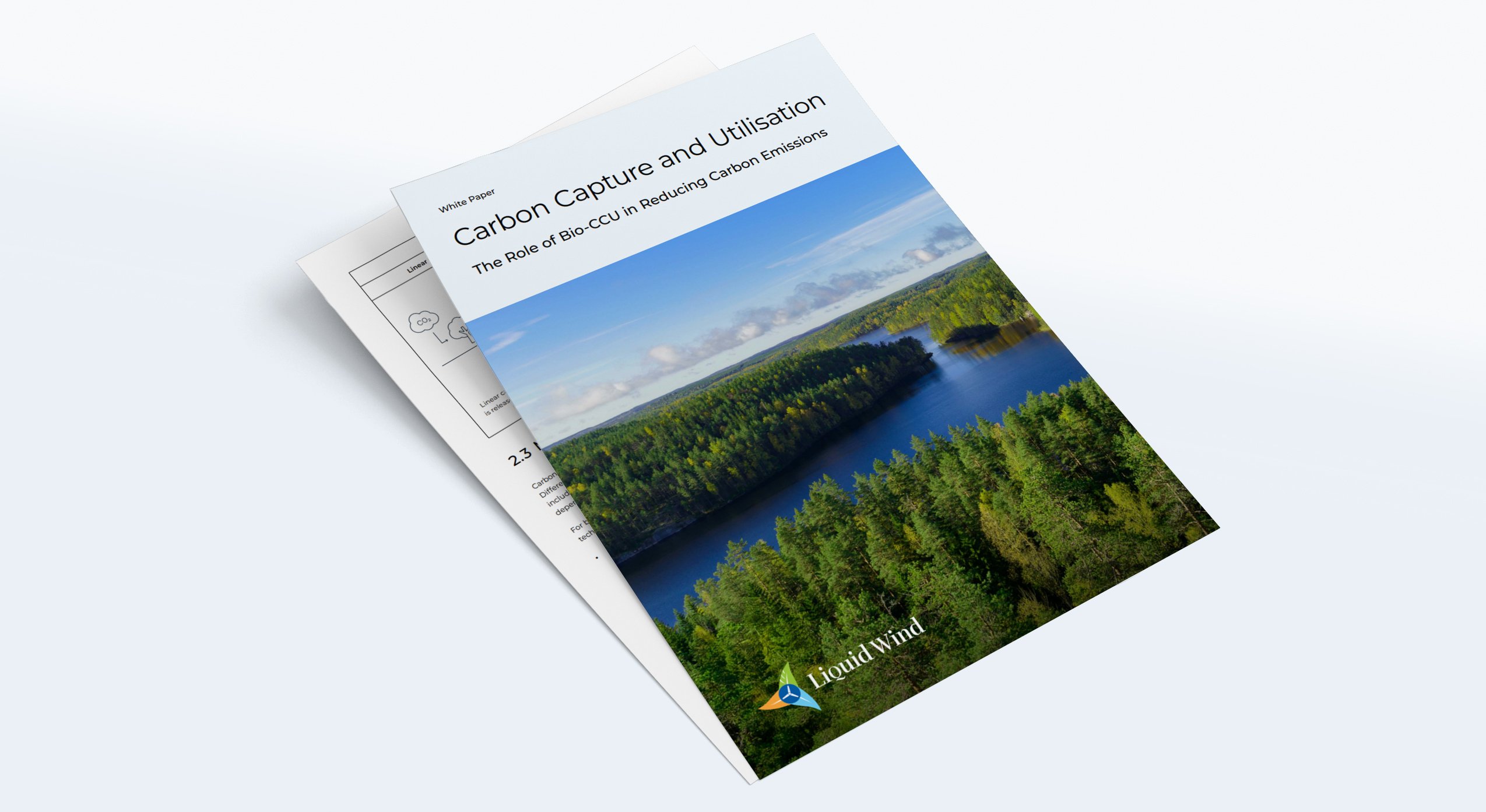Pulp and Paper

Turning Emissions into Sustainable Fuel
Pulp and paper mills have ideal conditions to support sustainable fuel production. With access to biogenic CO₂ and widespread use of biomass-based energy in combined heat and power (CHP) systems, many mills already generate renewable electricity and steam for internal use. By integrating an eFuel facility alongside existing operations, mills can create additional value from what is already in place — using available inputs to produce eFuels like eMethanol.
The eFuel Integration Opportunity
Maximising Value from Existing Resources
By integrating eMethanol production alongside mill operations, pulp and paper facilities can achieve both environmental and economic benefits — managing carbon emissions, making efficient use of renewable electricity, and improving energy self-sufficiency.
Repurposing Biogenic CO₂ from Combustion Processes
In kraft mills, for example, recovery boilers emit CO₂ from the combustion of black liquor. Capturing and utilising this biogenic CO₂ in eMethanol production transforms what would otherwise be an emission into a valuable fuel input, supporting both sustainability goals and new business opportunities.
Utilising Power Surplus
When available, surplus renewable electricity can power the electrolysis process to produce green hydrogen. This hydrogen is then combined with captured biogenic CO₂ to create eMethanol — a high-value, sustainable eFuel derived from existing mill resources.
Supporting Mill Sustainability
By using renewable electricity and capturing biogenic CO₂ already available on-site, mills can reduce their carbon footprint, contribute to circular carbon practices, and align with tightening climate regulations.
Generating Carbon Credits
Through carbon credit schemes, mills can offer credits to companies seeking to offset their emissions — opening an additional revenue stream while supporting broader climate goals.
Industrial Synergies: Smart Use of Resources
Energy Integration
Where feasible, electricity and waste heat from mill operations can support the energy demands of eMethanol production, improving overall system efficiency.
Oxygen Supply
Oxygen, released during the electrolysis step of eMethanol production, can be redirected into the mill processes, reducing reliance on external oxygen sources.
Water Circulation
Water used in eMethanol production can be recycled or reused within the mill, contributing to better water efficiency and resource optimisation.
Shared Infrastructure
Integrated operations can leverage shared logistics, storage, and utility systems, helping reduce overall capital and operational expenditures for both facilities.
Ready to Explore eMethanol Production?
Our facilities are designed to integrate seamlessly with existing mill operations.
Reach out to discuss opportunities with us!
Insights

